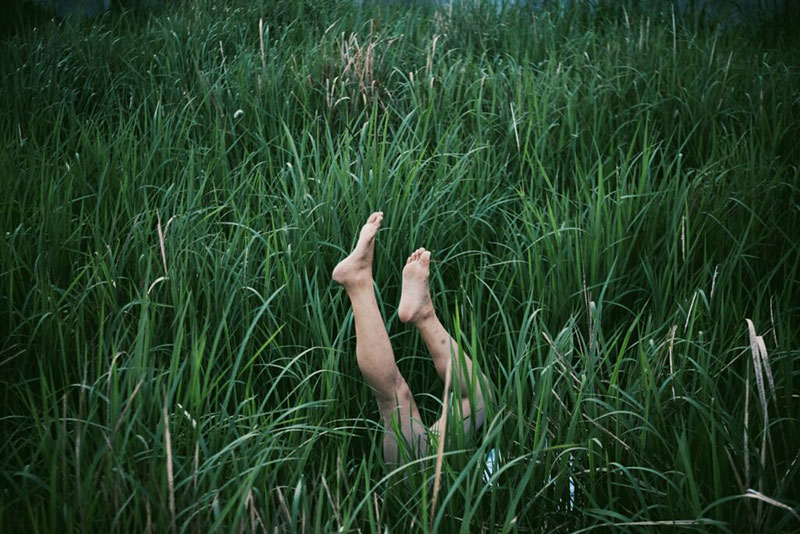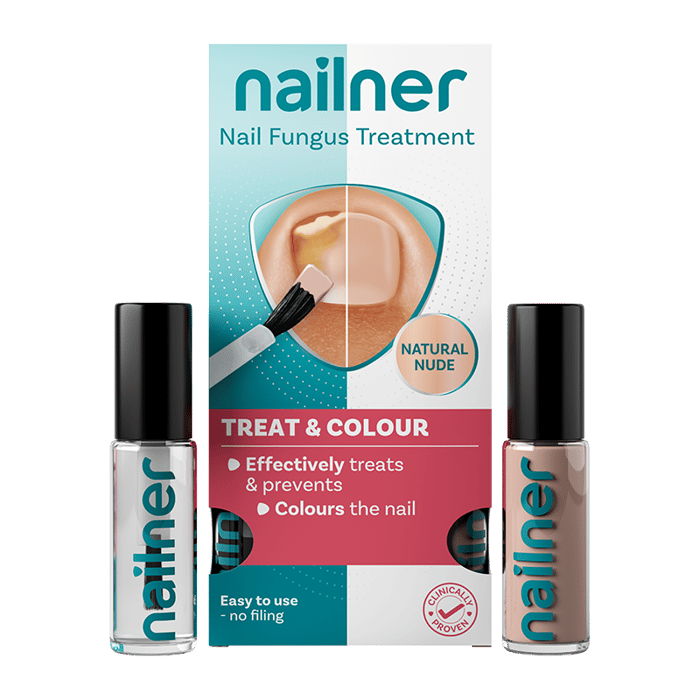White Spots on the Nails
Have you ever noticed small, white spots on your nails?
An incredibly common affliction known as leukonychia, white spots on nails are usually nothing to worry about, but they can indicate an underlining health condition, so it should be investigated further.
Within the below ultimate guide, you will discover everything there is to know about white spots.
Symptoms of white spots on nails
As the name suggests, the main characteristic of white spots on nails is the appearance of small white spots.
However, you may also see larger white lines across the nail or bigger individual white dots. The specific cause of your white spots affects how they manifest themselves. For example, if you have injured your nail, you are more likely to see a large white spot in the middle of the nail.
However, if your white spots are caused by an allergic reaction, the dots and lines may be different in appearance on each nail.

How to treat white spots on nails
The treatment you need will be dependent on the cause of the white spots on your nails:
How to treat white spots caused by fungus
If your white spots are the result of a fungal nail infection, then you should start with a topical antifungal treatment such as over-the-counter product Nailner. It is worth noting that fungal nail infections can take several months to clear up, so make sure that you complete the entire course of treatment to ensure that the infection completely goes away.
Again, if you experience frequent fungal nail infections, consult your doctor, as you may require a surgical procedure, oral or laser treatment.
How to treat white spots caused by an allergic reaction
If you suspect that the white spots on your nails have been caused by an allergic reaction, the simplest way to treat them is to stop using the product that is irritating your nails. For example, a nail polish or nail polish remover.
If you do not notice an improvement in the appearance of the spots, then you should consult your doctor.
How to treat white spots caused by injury
The most common cause of white spots on nails, the best thing for a nail injury is time. You simply need to wait for the injury to heal, and then you should see the white spots start to disappear.
If the injury is serious, you should see a doctor or go to your nearest hospital for treatment.

What causes white spots on nails?
There are several possible causes of white spots on the nails, with the most common ones being an injury to the nail bed or fungal nail infection.
An injury may occur if you pinched or struck your finger or nail or due to frequent manicures or pedicures using gel or acrylic nails.
Fungal nail infections are extremely common and often start when a small crack in your nail or the surrounding skin allows a type of fungi to enter the nail and cause an infection.
Take a closer look at all the possible causes of white spots on nails below:
Nail fungus
White spots on nails can sometimes be the first symptom of a nail fungus infection. This is particularly common on toenails. One of the most common nail infections that causes white spots is onychomycosis.
If left untreated, this nail fungus can quickly spread to the nail bed and can cause your toenails to become flaky and/or thick and brittle.
An allergic reaction
If you have recently used a new nail polish or nail polish remover, this may be the cause of the white spots on your nails. An allergic reaction to nail polish, gloss, or hardener is actually a lot more common than you might think, so if you have purchased a new product, this could be the culprit.
Trauma to the nail
As mentioned above, an injury to the nail is one of the most common causes of white spots on nails. This could include shutting your fingers in a door, hitting your finger with a hammer, or wearing footwear that is too small.
Many people do not realise that their white spots have been caused by an injury, as the white spots often appear long after the injury has healed.
Frequent manicures and pedicures can also cause trauma to the nail, especially if the treatment you get requires a lot of pressure on the nail bed.
A vitamin deficiency
If you are deficient in a particular vitamin or mineral, this can cause white spots to appear on your nails. The two most common deficiencies linked to white spots are zinc and calcium. That being said, white spots on nails from a protein deficiency can also occur, particularly in people who have a problem with the digestion of proteins.
Certain medications
Sometimes white spots on nails can be a side effect of certain medications, including:
- Sulfur drugs such as antibiotics to treat skin infections
- Water pills such as furosemide and hydrochlorothiazide
- Arthritis pain medication like celecoxib
- Diabetes medication such as glimepiride and glyburide
- Some chemotherapy drugs
Other less common causes of white spots
White spots on nails can sometimes be a symptom of a more serious health problem or condition such as:
- Heart disease
- Kidney failure
- Liver cirrhosis
- Psoriasis or eczema
- Hyperthyroidism
- Pneumonia
- Arsenic positioning
- Hereditary conditions such as Bart-Pumphrey syndrome, Bauer syndrome, and Darier disease
- Covid-19
If you are concerned about the white spots on your nails or you are experiencing other symptoms as well, make an appointment with your doctor to rule out any of the above conditions.

How to prevent white spots on nails
To prevent white spots on your nails from returning, there are several actions that you can take, including:
- Avoid any contact with substances that may cause irritation
- Avoid excessive use of nail polish or nail treatments such as manicures and pedicures
- Cut your nails short
- Moisturise your nails after washing
- Avoid biting your nails
- Use a base treatment before applying nail polish
- Wear shower shoes in public pools and gyms

Do you need to seek a doctor for white spots on nails?
Most of the time, white spots on nails are nothing to worry about, and if you think your spots are a result of an injury, then you may not need to see the doctor at all.
However, if your white spots are accompanied by other symptoms, they are persistent, or they are becoming worse, then you should visit a healthcare professional for an official diagnosis and to rule out any underlying health conditions.
Your doctor should perform an examination of your hands or feet, and further tests may be needed if the immediate cause is not identified or they suspect that you have a vitamin deficiency.
Some of the tests they may carry out include:
- Mycology – This is where samples of fungi and nail clippings are sent away to be examined.
- Nail biopsy – This involves your doctor removing a small piece of nail tissue for testing.
- Blood test – This is to detect the presence of a systemic disease such as diabetes, psoriasis, or an iron deficiency.
What is leukonychia?
Although it sounds serious, leukonychia is simply the scientific term for a condition where the whole nail plate is white in colour.
Leukonychia is a very common condition, with most adults experiencing it at some point in their lives. For some, the white spots may be small and barely noticeable, whereas for others, the spots may be larger and span the entire length of the nail.
Either way, the white spots themselves are completely harmless and should not be cause for concern. There are three main types of leukonychia:
- Punctate leukonychia manifests as small white spots on the nails.
- Longitudinal leukonychia looks like a white band down the nail.
- Striate or transverse leukonychia is where one or more horizontal white lines appear across the nail.
You can also divide this condition into two further categories: true leukonychia and apparent leukonychia.
True Leukonychia
If a white spot is caused by damage to the nail, this is known as true leukonychia. In this condition, the white spots or lines will remain unchanged when pressure is applied. This type of leukonychia should go away once the nail has grown out.
Apparent Leukonychia
When the nail bed underneath the nail has been affected, this is known as apparent leukonychia. With this type, it is the nail bed itself that affects the colour of your nail, and the white spots will not lessen or disappear when pressure is applied.
Apparent leukonychia will not go away once the nail has grown out.

Frequently asked questions
Which age group tends to get white spots on nails?
White spots on nails can happen at any age, although the causes of white spots on nails in children include that they have thinner nails and that they are more likely to injure their fingers or nails when playing.
If you work in a job that involves using your hands a lot, you are also more likely to experience white spots on your nails.
Do white spots on your nails mean deficiencies?
Not necessarily. Although mineral and vitamin deficiencies can cause white spots on nails, they are not the only possible cause of this. Both injury to the nail and nail fungus can also cause white spots and are much more common than deficiencies.
What is the semi circular white spot on the nail called?
Small semi circular white spots on the nails are called leukonychia and are typically caused by injury to the nail. When you injure your finger or nail, this causes a change in the keratin layer of the nail, which is what makes the area become more opaque.
How to hide white spots on nails?
To hide white spots on nails, you can use a skin-tone coloured nail varnish or a brightly coloured one. Do not apply polish if you think that your white spots are caused by an allergic reaction or if you have a bad injury to the finger or nail.
Are white spots on nails a fungus?
White spots on nails can be caused by a common nail fungus called white superficial onychomycosis. The first symptom of this infection is often white spots on the fingernails or toenails. If left untreated, nail fungus can grow and spread and cause discomfort.
However, there are other possible causes, including white spots on nails thyroid, white spots on nails iron deficiency, white spots on nails protein deficiency, and white spots on nails vitamin deficiency. To rule any of the above out, you should ask your doctor for a blood test.
What causes white spots on teeth and nails?
White spots on your teeth and your nails can be caused by a calcium deficiency. Calcium is needed for healthy teeth, so a lack of this mineral can weaken the tooth enamel and cause white stains. White spots on nails can also be caused by a vitamin or mineral deficiency, with the two most common causes being a zinc deficiency or a calcium deficiency.
Do I need to seek medical attention for white spots on nails?
In most cases of white spots on nails, medical attention is not needed. If your white spots are infrequent or are caused by an injury, then they should clear up on their own. If you do not know the cause of your white spots and are not sure if you need treatment, you should visit your doctor or pharmacist. If you suspect that you have a fungal nail infection, you can use over-the-counter remedies such as Nailner without the need for a prescription.
Can nail polish cause white spots on nails?
Yes, nail polish can cause white spots on nails. If you notice white chalky patches after removing nail polish, in most cases, this is due to a condition called keratin granulation.
This occurs from the constant use of nail polish wearing and, although it is not a fungal infection, it can trigger one.













